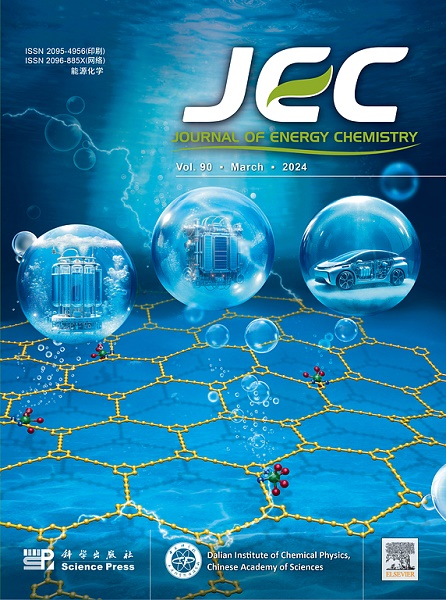Exploring the optimal molecular weight of polyacrylic acid binder for silicon nanoparticle anodes in lithium-ion batteries
IF 13.1
1区 化学
Q1 Energy
引用次数: 0
Abstract
Polyacrylic acid (PAA)-based binders have been demonstrated to significantly enhance the cycling stability of pure silicon (Si) anodes compared to other binder types. However, there is a notable lack of systematic and in-depth investigation into the relationship between the molecular weight (MW) of PAA and its performance in pure Si anodes, leading to an absence of reliable theoretical guidance for designing and optimizing of PAA-based binders for these anodes. Herein, we select a series of PAA with varying MWs as binders for Si nanoparticle (SiNP) anodes to systematically identify the optimal MW of PAA for enhancing the electrochemical performance of SiNP anodes. The actual MWs of the various PAA were confirmed by gel permeation chromatography to accurately establish the relationship between MW and binder performance. Within an ultrawide weight average molecular weight (Mw) range of 35.9–4850 kDa, we identify that the PAA binder with a Mw of 1250 kDa (PAA125) exhibits the strongest mechanical strength and the highest adhesion strength, attributed to its favorable molecular chain orientation and robust interchain interactions. These characteristics enable the SiNP anodes utilizing PAA125 to maintain the best interfacial chemistry and bulk mechanical structure stability, leading to optimal electrochemical performance. Notably, the enhancement in cycling stability of SiNP anode by PAA125 under practical application conditions is further validated by the 1.1 Ah LiNi0.8Co0.1Mn0.1O2/SiNP@PAA125 pouch cell.

求助全文
约1分钟内获得全文
求助全文
来源期刊

Journal of Energy Chemistry
CHEMISTRY, APPLIED-CHEMISTRY, PHYSICAL
CiteScore
19.10
自引率
8.40%
发文量
3631
审稿时长
15 days
期刊介绍:
The Journal of Energy Chemistry, the official publication of Science Press and the Dalian Institute of Chemical Physics, Chinese Academy of Sciences, serves as a platform for reporting creative research and innovative applications in energy chemistry. It mainly reports on creative researches and innovative applications of chemical conversions of fossil energy, carbon dioxide, electrochemical energy and hydrogen energy, as well as the conversions of biomass and solar energy related with chemical issues to promote academic exchanges in the field of energy chemistry and to accelerate the exploration, research and development of energy science and technologies.
This journal focuses on original research papers covering various topics within energy chemistry worldwide, including:
Optimized utilization of fossil energy
Hydrogen energy
Conversion and storage of electrochemical energy
Capture, storage, and chemical conversion of carbon dioxide
Materials and nanotechnologies for energy conversion and storage
Chemistry in biomass conversion
Chemistry in the utilization of solar energy
 求助内容:
求助内容: 应助结果提醒方式:
应助结果提醒方式:


